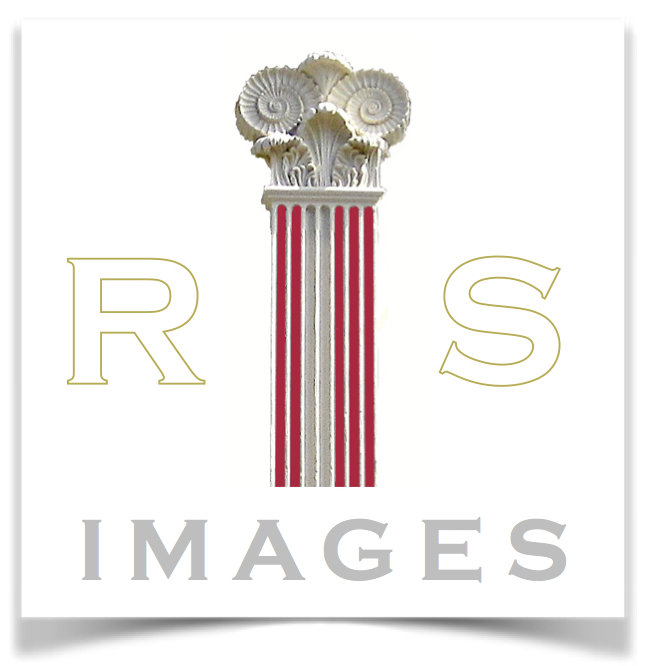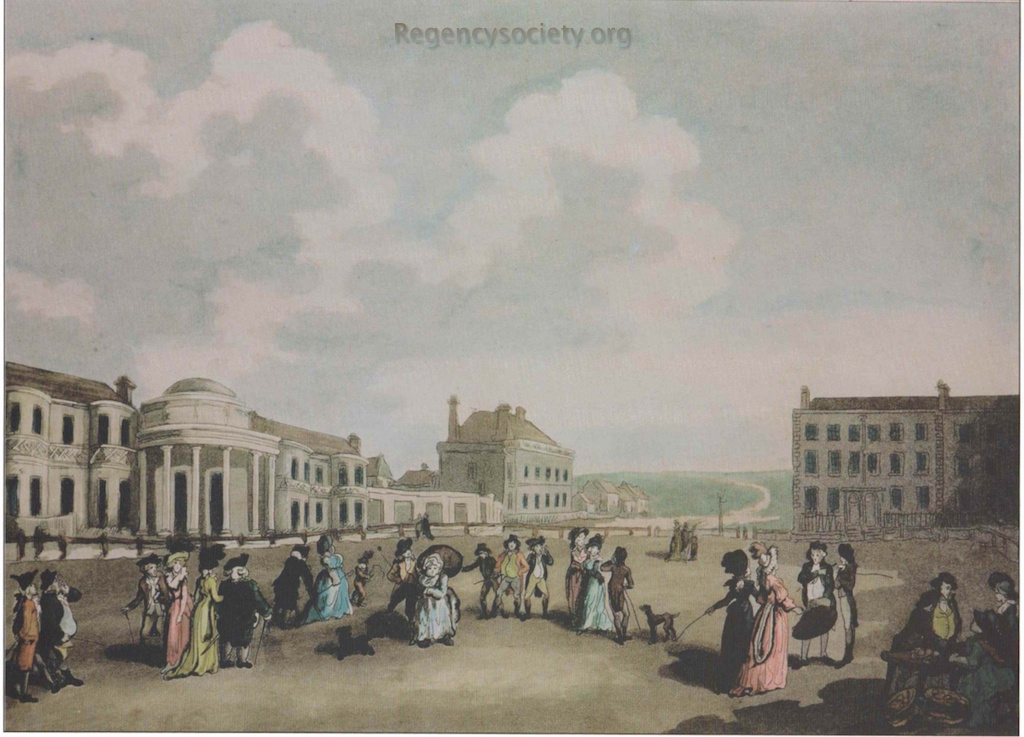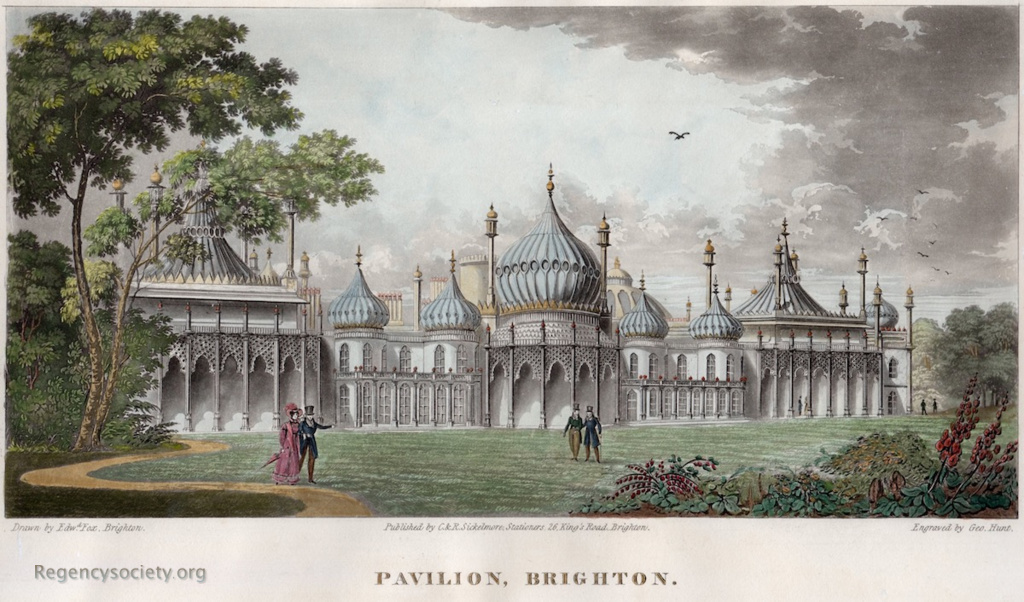BPC00286
Aquatint engraving by Alken after Thomas Rowlandson. Published by Robinson of Paternoster Row, 1 June 1790, and showing Henry Holland’s early Pavilion design on the left, with Grove House (later called Marlborough House) in the centre. To the right are the ‘Blue & Buffs’ lodging houses, two of which remain today.
Regarding Grove House, to the north of the Pavilion, when the Duke of Marlborough sold the original Marlborough House on the Steine, he purchased Grove House and changed its name to Marlborough House. So, for several years, until the Prince purchased this second Marlborough House in 1812 and demolished it to extend the Pavilion, there were two ‘Marlborough House’ homes, one north of the Pavilion and the original one to the south. In The Brighton Ambulator of 1818, the publisher C Wright wrote: ‘In 1814, Marlborough House [the renamed Grove House] being connected with the royal edifice, a suite of apartments were added on the north side which had been much required. It is useless to give a description of this range of building, as it will shortly come down, in order to give place for further improvements to the Pavilion’. One unfortunate confusion over this second Marlborough House is that, when referred to in modern books on Brighton, the authors often continue to call it Grove House even when referring to it beyond the date of its name change.
The original watercolour by Rowlandson is illustrated in Brighton Revealed: Through Artists’ Eyes c1760-c1960 published by the Royal Pavilion, Art Gallery and Museums, Brighton, 1995, p 52.
Images of Brighton 341 and illustrated on page 31.
See all images of the Royal Pavilion Estate
See all images of historic squares, terraces and crescents
See all images of the Old Steine
loading map - please wait...



